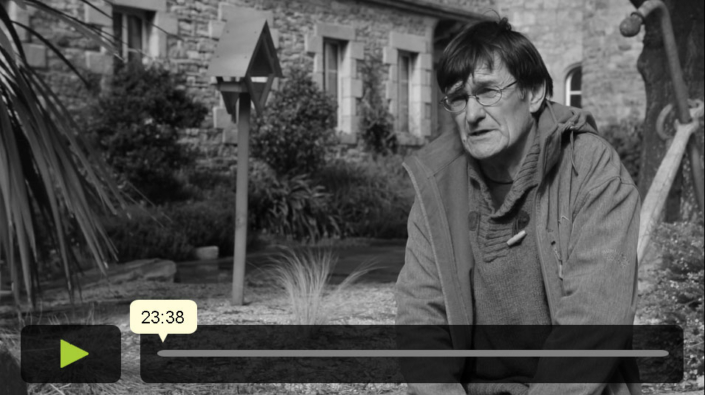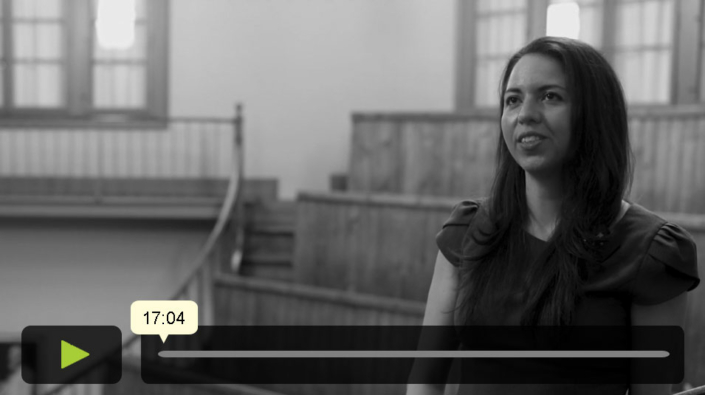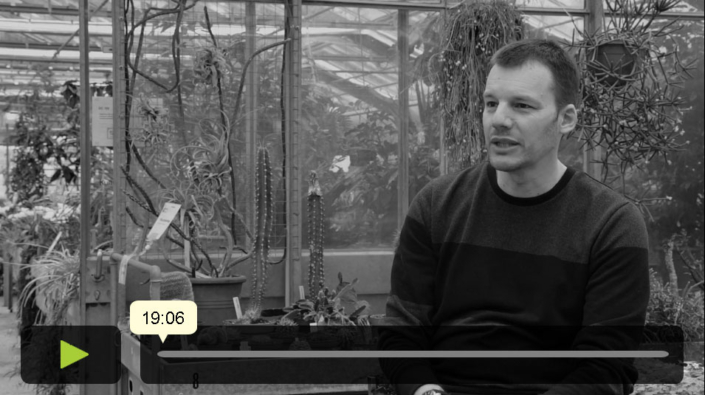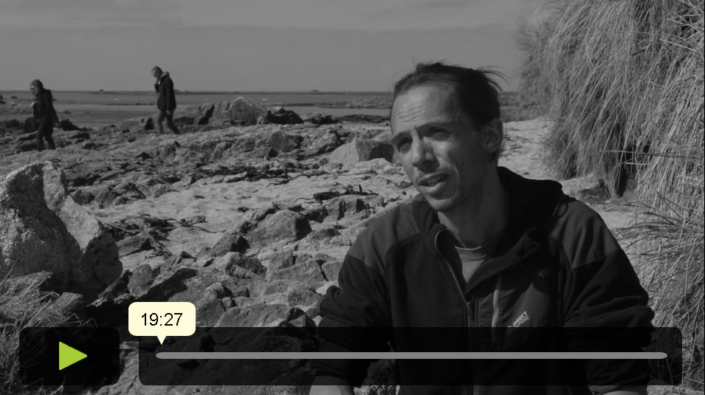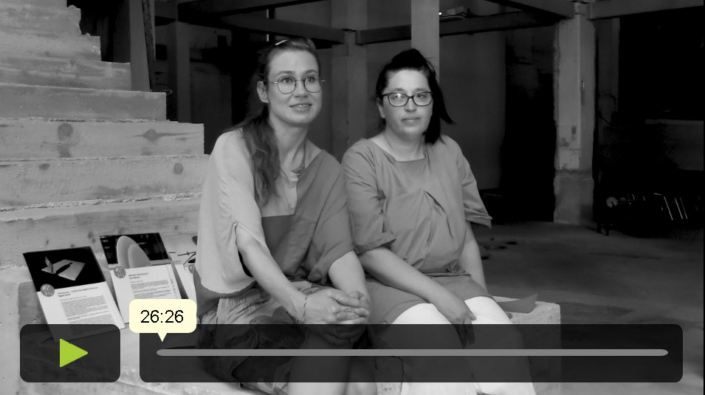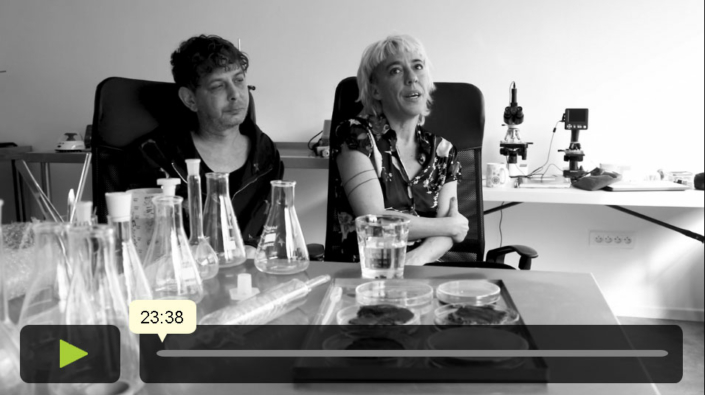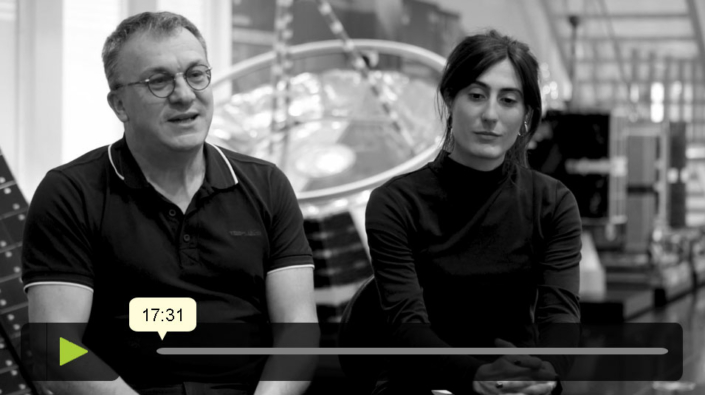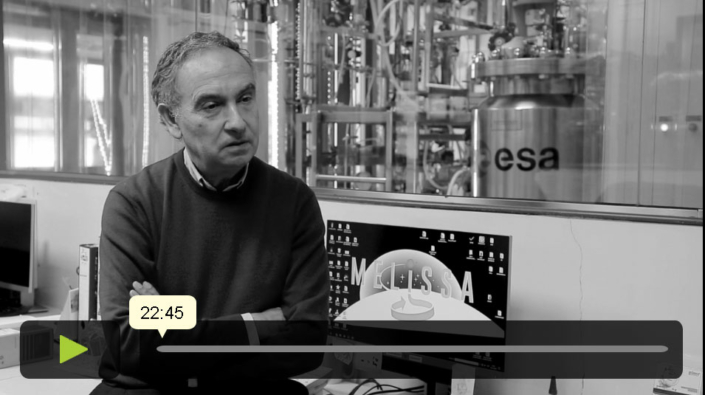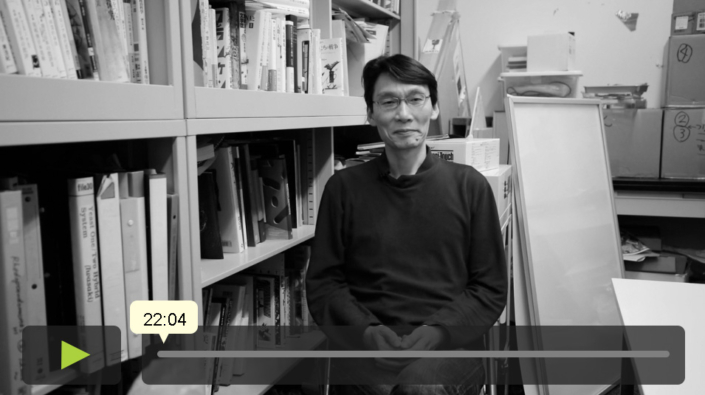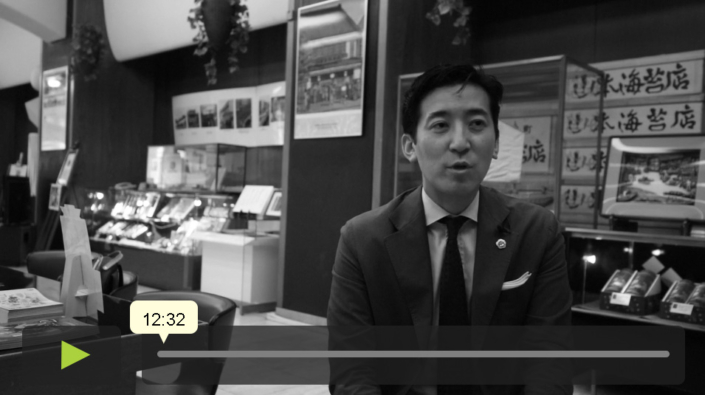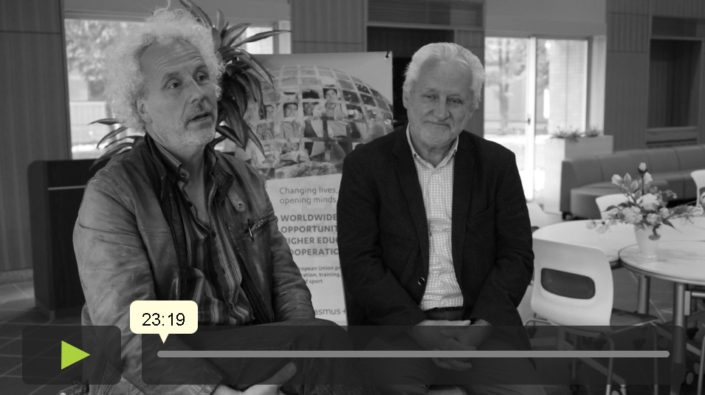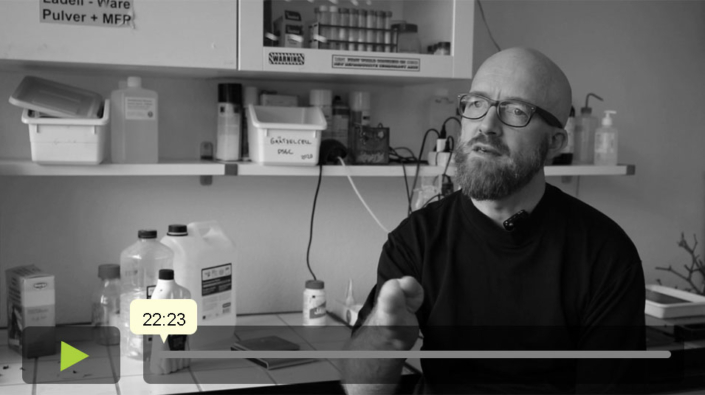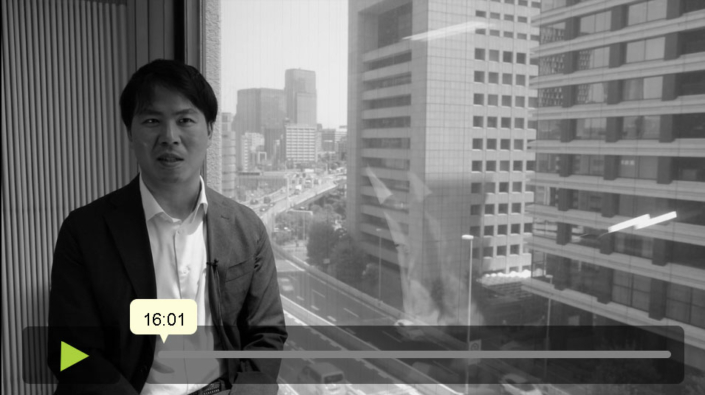Homo Photosyntheticus
KNOWLEDGE BASE
In 1972, atmospheric scientist James Lovelock undertook a scientific expedition on the Shackleton to the planetary oceans to measure the various levels of the abundant dimethyl sulfide (DMS), an oceanic sulfur gas known for its climate-cooling effect by decreasing the amount of solar radiation that reaches the Earth’s surface. The degradation of DMS in the atmosphere condenses water vapor, leading to the formation of clouds. Lovelock was mostly interested in the fact that the organic sulfur mostly emitted by oceans sprays was coming from its precursor Dimethylsulphoniopropionate (DMSP), a compound found in phytoplankton and algae, and was thus able to reveal the climate feedback loop correlating DMS production by marine phytoplankton with cloud reflection of sunlight. This observation led him to publish, that same year, the first article on the Gaia hypothesis, “Gaia as seen through the atmosphere”1. It is furthermore estimated that 50–80% of the Earth’s oxygen production comes from the ocean – from oceanic plankton, algae and some bacteria capable of photosynthesis. One species in particular, the cyanobacteria Prochlorococcus, which is the smallest photosynthetic organism of Earth, alone produces 20% of the oxygen in the whole of our biosphere. This percentage is higher than all terrestrial tropical forests combined and both examples are illustrating the extent to which phytoplankton and algae are important for the balance of the biosphere. But with the increase in green tides, harmful algal blooms and sargassum seas, algae and cyanobacteria have gained a bad reputation, even though these proliferations are caused by climate change, ocean acidification and global warming, chemical and nutrients discharges from deforestation, the petrochemical industries, industrial livestock farming and other anthropogenic causes.
The urgency of the environmental crisis demands societal change – reducing the collective carbon footprint, embracing sustainable energies, food alternatives and new ways of living.
Yet, from carbon sinks to alternative food and feed, algae can play a crucial role in the ecological transition. They can be used as biofuels, biomaterials, pharmaceuticals and cosmetics. Their nutritional role is recognized, rich in proteins, minerals, fatty acids and vitamins. Cyanobacteria known as spirulina and the micro-algae chlorella are promising food alternatives, and the food cultures of northeast Asia did not wait for the environmental crises of the 20th century to embrace macro-algae such as kombu, wakame and porphyra (nori) in their diets. The umami flavor of kombu seaweed was discovered in the early 20th century. Control of the lifecycle of nori seaweed by the British scientist Kathleen Drew-Baker[2] after World War Two gave a new start to the nori Japanese fishermen in need of resilience. A more recent scientific study conducted at the Roscoff Biological Station in the French department of Finistère(3] even described how the microbiota of the Japanese has undergone evolutionary lateral gene transfer to better digest nori. Now, in the 21st century, global food cultures are slowly beginning to incorporate macro-algae such as kombu, wakame and nori into their diets, but how might we consume more algae around our tables?
In marine life, many species (the sea slug Elysia Chlorotica, zebrafish, Costasiella Kuroshimae or leaf sheep, etc.) have even successfully incorporated microalgae into their tissue over the course of their evolution in order to benefit from their photosynthesis. The evolutionary biologist Lynn Margulis is often mentioning Symsagittifera roscoffensis, the Roscoff marine worm from Brittany, a wholly photosymbiotic species that ingests but does not digest its symbiotic micro-algae, keeping it in its tissue and surviving entirely through its photosynthesis. In Microcosmos, Margulis and Dorion Sagan speculate on this animal-algae, expanding reflection toward a future “Homo Photosyntheticus” of the human species, a future in our evolution in which humans would become fully phototrophic, a human-plant with no need to feed[4]. These marine photosymbioses have inspired medical and biomedical research. Many research teams are trying to take advantage of this photosymbiotic logic to integrate micro-algae on or in damaged human tissue for regeneration through their photosynthesis[5]. The speculations of Margulis and Sagan have also inspired speculative bio-artists and science fiction writers. From Quimera Rosa to Špela Petrič and Robertina Šebjanič, from Ursula Le Guin to Kim Stanley Robinson[6], it is a future “Homo Photosyntheticus” that seems to be inspiring humankind, both at metaphorical and practical levels.
So how to draw inspiration from this speculative shift to a “Homo Photosyntheticus”? Margulis and Sagan envisioned it as enabling humans to become multi-planetary. The European Space Agency’s MELISSA (Multi-Ecological Life Support System Alternative) program[7] is considering circular systems for life on other planets, imagining the cultivation of spirulina as an alternative food and oxygen source. The Multicellular Marine Models aboratory at the Roscoff Biological Station[8] is planning to study the Roscoff worm in space to better understand its photosymbiotic life cycle and its tissue regeneration capacities. Why? Perhaps because we still only know far too little about the oceans, the planetary holobionts and the life of algae, these protists that are “queering” conventional taxonomy. Is the objective to go from the ocean floor to outer space and back to Earth, the ocean planet? To finally leave the Anthropocene and enter this Chthulucene[9] that the philosopher and zoologist Donna Haraway is calling for?
These few words summarize the artistic research topics we have been exploring and expanding upon since 2021 in various forms: writing, videos, workshops, conferences, installations, art objects and performances. They are also nourishing a creative documentary now being made. This research through writings and videos lead to: interviews with artists Špela Petrič and Robertina Šebjanič, art collective Quimera Rosa, scientists from the European Space Agency’s MELISSA program, and professor Hideo Iwasaki, director of the metaPhorest bioaesthetics research platform at the University of Waseda in Tokyo, as well as a film journal on the memorial to Kathleen Drew-Baker in Kumamoto, on Kyushu island, Japan.
[1] J. E. Lovelock, “Gaia as seen through the atmosphere”, P. Westbroek & E. W. deJong (eds.), Biomineralization and Biological Metal Accumulation, D. Reidel Publishing Company, 1983, pp.15-25. Online at: http://www.jameslovelock.org/gaia-as-seen-through-the-atmosphere/
[2] Drew, Kathleen M. “Conchocelis-phase in the life-history of Porphyra umbilicalis (L.) Kütz”. Nature. Vol. 164, 4174 (1949): 748–749. Online at: https://www.nature.com/articles/164748a0
[3] Hehemann, Jan-Hendrik et al. “Transfer of carbohydrate-active enzymes from marine bacteria to Japanese gut microbiota.” Nature vol. 464,7290 (2010): 908-12. Online at: https://www.nature.com/articles/nature08937
[4] Lynn Margulis and Dorion Sagan, Microcosmos. Summit Books, 1986
[5] Chávez, Myra N et al. “Photosymbiosis for Biomedical Applications.” Frontiers in bioengineering and biotechnology vol. 8 577204. Oct. 6, 2020
[6] Kim Stanley Robinson, Oral Argument: A Short Story, 2015. Online at: https://www.kimstanleyrobinson.info/content/oral-argument-short-story
[7] https://www.melissafoundation.org/
[8] https://www.sb-roscoff.fr/fr/equipe-modeles-marins-multicellulaires
[9] Donna J. Haraway, Staying with the Trouble, Duke University Press, 2016.
Ewen Chardronnet & Maya Minder
The Homo Photosyntheticus project has been build up by the many previous contributions of artists, scientists, facilitators and curators from around the world: Maya Minder (CH), Špela Petrič (SI), Robertina Šebjanič (SI), Cedric Carles & Atelier21.org (FR), Bureau d’études (FR), Miha Turšič (SI), Jean-Philippe Blanchard (FR), Carole Thibaud (FR), Sandra Bühler (CH), Vincent Pouplard (FR), Oliver Morvan (FR), PostGravityArt (SI), Nicolas Floc’h (FR), Miha Godec (SI), Elvin Flamingo (PL), Disnovation (FR/PL), Pauline Briand (FR), Francois Robin (FR), Xavier Bailly (FR), Gaëlle Correc (FR), Julien Bellanger (FR), PING (FR), Natasa Petresin (SI/FR), Philippe Potin (FR), Dominik Refardt (CH), Mira Chavez (MX), Francesc Gòdia (ES), Christophe Lasseur (FR), Sandra Ortega Ugalde (ES), Quentin Aurat (FR), Isabelle Carlier (FR), Ryu Oyama (JP), Cherise Fong (US), Hideo Iwasaki (JP)
And has been supported by various grants, Art Explora Foundation, Carasso Foundation, Pro Helvetia, Centre National de la Cinématographie (CNC-DICréaM), Diffusing Digital Art (DDA Contemporary Art), Antre-Peaux, Région Centre-Val-de-Loire, Jeu de Paume, the Creative Europe Programme of the European Union.
SUPPORTED BY
 ART2M / Makery | Jeu de Paume | Antre Peaux | Région Centre Val-de-Loire
ART2M / Makery | Jeu de Paume | Antre Peaux | Région Centre Val-de-Loire
Union Européenne



